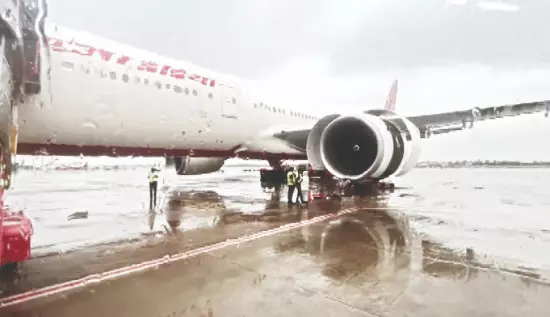DGCA issues new weather safety norms

New Delhi: The Directorate General of Civil Aviation (DGCA) has released a revised set of operational guidelines for airlines, directing flight crews to prioritise safety during adverse weather, even if it results in schedule disruptions. The updated advisory applies to both scheduled and non-scheduled operators.
In a circular issued on Sunday, the regulator stated, “Captains are encouraged to initiate diversions or air-turn-backs, as required by prevailing conditions.” The directive underscores the need for pilots to exercise increased caution amid shifting weather patterns attributed to climate change.
The move follows recent incidents, including a spate of helicopter crashes in the Kedarnath region and severe turbulence experienced by an IndiGo flight to Srinagar last month.
The circular outlines scenarios such as severe turbulence, windshear, icing, and sudden drops in visibility as valid conditions for considering diversion, rerouting, or return. It adds that visual illusions caused by wet runways or night operations during rain must be countered by verifying instrument readings.
Flight crews have been advised to maintain a minimum distance of 20 nautical miles upwind from convective weather activity and to avoid flying beneath thunderstorm formations. “Flying beneath thunderstorm clouds is discouraged due to the elevated risk of windshear, lightning, and hail,” the circular notes. The DGCA also stressed the need for thorough pre-flight weather planning and called on operators to instil a conservative approach in decision-making. “Pilots are encouraged to plan deviations early,” the agency said.
In a notable inclusion, the circular addresses Ice Crystal Icing for the first time, describing it as a hazard linked to convective weather systems. “Pilots are advised to navigate around such areas laterally rather than climbing or descending through them in line with global best practices,” the DGCA stated.
Improved communication has also been highlighted as critical. The circular advises timely briefings to passengers, proper coordination with cabin crew, and continuous updates to Air Traffic Control (ATC) during turbulence or sudden weather changes.
To enhance preparedness, the regulator has urged operators to adopt scenario-based training modules and integrate Threat and Error Management (TEM) strategies. “These guidelines will remain in force during the pre-monsoon, monsoon, and other adverse weather periods,” the DGCA added.



